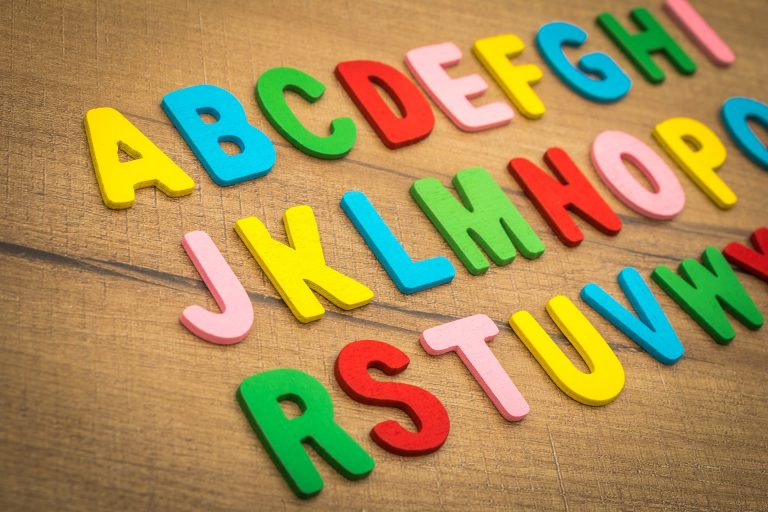What About the Learning Style of Your Child? How to Support Their Success
You may have noticed that there are different approaches to learning. Some children or adults learn best by seeing, others by hearing, and some by doing.
Okay, actually everyone does learn very well by doing. That is why in medicine or rather surgical training this phrase pops up all the time: “See one, do one, teach one.” And it is very true.
Once you have gotten to the stage to do something on your own you remember it much better, than if you just watched someone doing it. You have it all down and then you start to explain it to someone else and you realize all the little steps that you copied from the person that showed you, the things you did unconsciously and now you have to bring them into consciousness to teach them to someone else.
Out there are different approaches to learning, known as learning styles. Some say identifying a child’s learning style is important because it allows you to tailor teaching methods to their specific needs, leading to more effective learning outcomes. Others have shown that compared to one another using your preferred learning style doesn’t automatically help you to better grades or to succeed.
We will explore the different learning styles: visual, auditory, reading/writing, and kinesthetic, and discuss the multiple intelligence theory, which suggests that individuals have different strengths and abilities across a range of intelligences.
And I will also provide tips and strategies on how you can find different learning styles, to support your kid’s learning and make it engaging through different methods.
Understanding and using different learning styles can help your child in everyday situations, improve their academic performance and boost their confidence.
Understanding Different Learning Styles
Let’s talk about the different learning styles, what it means, and how you can use them for your children’s learning journey.
Visual learning
Kids that prefer this learning style, understand best through seeing the information. They often prefer pictures, diagrams, and graphs to text-based materials.
They may also benefit from color coding, mind maps, and other visual aids.
Visual learners are often good at remembering visual details, like faces and images. This style is especially helpful if you have kids that struggle with following verbal instructions or paying attention in lectures.
Auditory learning
Auditory learners like hearing information. They may enjoy lectures, audiobooks, and discussions.
They may also benefit from using music and rhymes to help them remember information.
Auditory learners tend to have good listening skills and remember the information they hear. Test it if your child seems to be struggling with visual tasks only, or if understanding written tasks or diagrams is hard for them. You can try reading the assignments and let them rephrase it in their own words.
Kinesthetic learning
Kinesthetic learning helps especially for kids that have a hard time sitting still and brings variety into everyday learning. Like I mentioned above some things are learned best through physical activity and hands-on experience.
Many children enjoy taking things apart, building models, or using manipulatives. They may also benefit from movement, like pacing or tapping, while learning. In my opinion, sitting still isn’t something absolutely required for learning, like in the traditional classroom settings.
Kids that enjoy kinesthetic learning tend to be good at using their bodies to express themselves.
Learning Through Reading/Writing
Sometimes text-based material is the best way to go. Seeing something as a written word or writing something down can help to remember it better.
Identifying children that prefer this learning style is easy as they are quite often the typical bookworm, reading whatever they get in their fingers and they often like taking notes, making lists, highlighting and color coding the text or writing in general. Taking notes can be a good way to engage kids that tend to zone out when listening to a lecture only.
I think establishing a love for reading and the written word is always beneficial for your child’s learning journey. Being able to attain information on your own by opening a book is magical.
The Multiple Intelligence Theory
The multiple intelligence theory by psychologist Howard Gardner suggests that individuals have different strengths and abilities and that there are different kinds of intelligence.
These include 8 different Intelligences, that he separates as following:
- Visual-spatial
- Linguistic-verbal
- Logical-mathematical
- Body-kinesthetic
- Musical
- Interpersonal
- Intrapersonal
- Naturalistic
Identifying your child’s strengths across these intelligences can also help to find learning methods that fit their specific needs and it also helps to see your children’s strengths instead of focusing on their weaknesses, which can help to build their confidence.
Understanding your child’s learning style and multiple intelligences can help you better support their learning and development.
Identifying Your Child’s Learning Style
Today many experts have come to the conclusion, that there isn’t something like the One learning style that is best for a person to remember, so experimenting and changing up the routine can be beneficial instead of focusing just on one way of learning.
But it is also fact, that there sure is a preference when it comes to learning styles. So it can help to make learning more fun and that is just as important (if not even the most important part) for successful learning.
One of the most effective ways to identify your child’s preferred learning style is to observe them in different learning situations. Do they prefer to read or look at pictures? Do they like to talk through problems or work them out physically? Interacting with your child through play and conversation can also give you valuable insights into their learning style.
Pay attention to how your child responds to different learning situations. Do they get excited about experiments or hands-on projects? Do they enjoy listening to music or audiobooks? These clues can help you determine your child’s preferred learning style.
Your child’s interests and hobbies can also provide clues. For example, a child who enjoys drawing or coloring may like visual learning, while a child who loves dancing or sports may dive into kinesthetic learning.
There are also online resources available to help you identify your child’s preferred learning style, such as online assessments or quizzes. They can provide a starting point for understanding your child’s learning preferences and needs, just keep in mind, that you don’t focus too much on just one learning style and let your child experiment with others too.
Ways to Support Your Child’s Learning
There are many ways to bring different learning styles into everyday learning, here are some ideas regarding the different learning styles:
For visual learning
- Use visual aids like pictures, diagrams, and videos to help them learn
- Encourage them to take notes and highlight important information
- Provide them with opportunities to create visual representations of what they are learning, such as drawing or creating mind maps
For auditory learning
- Encourage them to listen to audiobooks or lectures
- Provide them with opportunities to participate in discussions and debates
- Use music or rhymes to help them remember information
For kinesthetic learning
- Provide hands-on activities and projects that allow them to learn by doing
- Encourage movement during learning, let them take breaks for physical activity or use fidget toys
- Use manipulatives, such as blocks or puzzles, to help them understand abstract concepts
For learning through reading/writing
- show them how and where they can find the information they are interested in on their own (like a library or the internet)
- introduce them to the idea of taking notes and how to capture the essence with just a few words
- help them establish a love for reading
- show them how writing things down can help solve problems
For Learning in General
- Provide opportunities for choice and variety in learning materials and methods
- Use interactive learning tools to engage your child
- Incorporate real-world examples and experiences to make learning relevant and interesting
Every child is unique, and so is their combination of learning styles. They may have one or two learning styles they favor or work best with, but that doesn’t mean they can’t use the other learning styles, too. Their preference may also change over time, as they, like we all, keep developing.
So continually assess your child’s learning needs and adapt their learning methods or environment accordingly.
By understanding and supporting your child’s learning style, you can help them reach their full potential and foster a lifelong love of learning.
Learning styles in a nutshell
Identifying your child’s preferred learning style can be a valuable tool for supporting their learning journey and even for academic success. By understanding their strengths and preferences, you can provide methods that cater to their specific needs.
Whether your child prefers visual, auditory, reading/writing, or kinesthetic learning, there are many strategies you can use to support their learning style.
By observing and interacting with your child, looking for clues in their behavior, considering their interests and hobbies, and utilizing learning style assessments and resources, you can gain a better understanding of your child’s favored learning style.
With this knowledge, you can provide them with the tools they need to reach their full potential and foster a love of learning that will last a lifetime.







